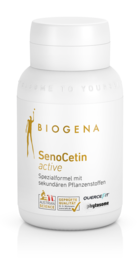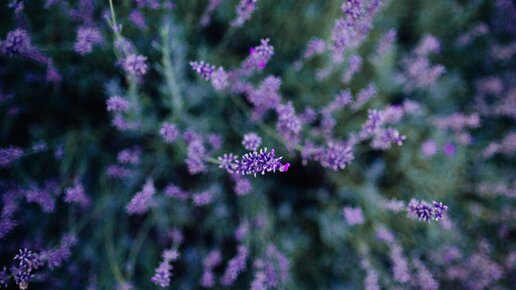Quercetin is a plant pigment that has made a name for itself as the "king of flavonoids". This royal attribute is no coincidence, because quercetin not only protects plants from harmful environmental influences, but also has a positive health effect in humans. So it’s no wonder that science has fallen for the flavonoid. But what is it about quercetin that’s so good? And how do you take it?
What is Quercetin?
Quercetin is a bright yellow natural dye that belongs to the flavonoid group of phytochemicals. Quercetin Quercus velutina owes its name to the safflower oak, a tree native to North America in whose bark quercetin was first discovered. Plants produce quercetin in their metabolism to protect themselves against harmful environmental influences such as UV radiation, pests, viruses, fungi and bacteria. Accordingly, the highest concentrations can also be found on the surfaces of the plants – in the skins, bark and petals.
Quercetin and its effect on the body – what is it good for?
In addition to protecting the plant world, quercetin also holds its protective hand over human health. Its nickname as the “king of the flavonoids” is due to the fact that it is considered one of the most antioxidant-effective flavonoids. Even the famous catechins in green tea cannot compete with its free radical scavenger qualities. Its remarkable antioxidant potential also makes quercetin a valuable health protection agent for us. After all, many symptoms, aging processes and metabolic disorders can be associated with an increased amount of free radicals.
In addition, further positive properties for quercetin have been demonstrated in studies. According to the current results, quercetin is, among other things:
- Antioxidative
- Anti-inflammatory
- Anti-allergic
- Immunomodulatory
- Age-delaying due to senolytic effect
The most important therapeutic indications of quercetin
All of these valuable properties make Quercetin an exciting supporter when it comes to maintaining health. However, even if your health has become unstable, quercetin – specifically used as a phytotherapeutic agent – can be beneficial. Based on current studies, we have summarised the most promising areas of application below:
Quercetin for better sports performance and physical recovery
Improve sporting performance without training more? According to studies, quercetin (in the form of the raw material brand Quercefit® with 20 times higher bioavailability than unformulated quercetin) makes this possible. In a placebo-controlled human study with 48 healthy amateur triathletes, the efficacy of 250 mg Quercefit® twice daily after swimming (750 m), cycling (20 km) and running (5 km) was investigated. The before and after comparison showed that Quercefit® not only maintained the physical resilience of the athletes, but also led to a faster recovery. Also the oxidative stress experienced by the athletes taking Quercefit® was significantly lower than that of the control group.
Quercetin for allergies and asthma
Sneezing, colds, itching. If the body’s defences overreact, quercetin can is there to help. This is also confirmed by a current human study, which was able to demonstrate the soothing effect of quercetin (as Quercefit®) in the case of common allergic complaints. In a randomised controlled clinical pilot study, 58 patients with mild to moderate asthma and rhinitis were given Quercefit® as a supplementary treatment during the allergy season. After the 30-day supplementation with 250 mg or 500 mg Quercefit® daily (corresponds to 100 mg or 200 mg quercetin respectively) the well-being and seasonal symptoms of the subjects were assessed. Quercefit® reduced the frequency of symptoms during the day by up to 50% and at night by up to 70% and improved respiratory function significantly.
Quercetin in viral respiratory tract infections
Does this sound familiar? A cold can be a real torment. One way to relieve your stricken body and get back on your legs more quickly is quercetin. Its antioxidant, immunomodulatory and anti-inflammatory properties are beneficial for viral respiratory tract infections. For example, the use of quercetin (as Quercefit®) in the early stages of COVID-19 proved beneficial and was able to reduce the symptoms of viral infection in a randomised controlled clinical study and prevent the development of a more severe form.
Daily requirement
Although there is no defined daily requirement for quercetin, abundant intake via the diet is widely considered to be very beneficial. If you want to take the flavonoid in a targeted manner, you can seek advice from a healthcare professional. The dosage recommendations are derived from studies and are generally between 250 and 500 mg daily. In the short term (up to 12 weeks), the dosage can also be increased.
The raw material brand Quercefit®, of which 250 to 500 mg per day are also recommended, is considered particularly effective. Whilst only 100 mg pure quercetin is contained in 250 mg Quercefit®, the bioavailability of quercetin is increased and up to 20 times higher due to its unique processing method (Phytosome® technology).
Availability in food: What contains quercetin?
Quercetin is found in countless plant-based foods. Particularly large amounts of the antioxidant are found in capers, herbs and green vegetables, in onions, apples and berries as well as in various types of tea. However, the quercetin content of these foods can decrease greatly from harvest to plate.
Not only do weeks of transport and storage time reduce the quercetin content. The flavonoid is also lost during cooking and by peeling (e.g. apple or pear peel). In addition, the cultivation of a food affects the concentration of the valuable protective substance. In one study, organic tomatoes contained almost 80 percent more quercetin than conventionally grown ones. And last but not least, the variety is also important. According to analyses, older apple varieties have more polyphenols (including quercetin) than newer strains (e.g. Golden Delicious).
Overview of the quercetin content of selected foods
Foodstuffs |
Overview of the quercetin content of selected foods |
| Vegetables | |
|
Onions |
35,0 |
|
Asparagus |
14,0 |
|
Cabbage |
7,1 |
|
Spinach |
4,0 |
|
Brokkoli |
3,0 |
|
Fruit |
|
|
Cranberries |
13,0 |
|
Blueberries |
7,0 |
|
Apples |
4,9 |
|
Blackcurrants |
3,5 |
|
Pulses/legumes |
|
|
Green beans |
3,9 |
|
Other plant-based foods |
|
|
Capers |
233,8 |
Table: Nach Bhagwat, S. et al. 2014 sowie nach Souci, S.W., Fachmann, W., Kraut, H. 2008.
Good to know!
Quercetin is commonly found in combination with various sugars (“glycolised”) in foods and therefore does not have the same effect as pure quercetin, which has a significantly higher antioxidant force.
Quercetin in food supplements
As part of phytotherapy, physicians recommend quercetin preparations with a precisely defined active substance content. The “first choice dietary supplement” should ideally not contain any unnecessary additives. This applies especially if the product is taken for a longer period of time under medical consultation.
In order to optimally exploit the potential of quercetin, it is also advisable to look at the active substance itself, because not all quercetin is the same. This is proven by the Italian raw material brand Quercefit®, which supplies the maximum bioavailable quercetin thanks to its special production method. In Quercefit®, the valuable quercetin, which is obtained from the Japanese cord tree (Sophora japonica), is not freely available, but is encased in phospholipids from the sunflower. Thanks to this technological trick, which has been patented as Phytosome® technology, our body can absorb the quercetin contained particularly well. As one clinical study demonstrated, the bioavailability of Quercefit® is up to 20 times higher than that of standard quercetin.
Buy Premium Quercetin Product(s) from BIOGENA
If you are looking for a quercetin preparation of the highest class, you will find it at BIOGENA. BIOGENA Quercetin Phytoactive Gold is truely a state-of-the-art product. The premium preparation delivers the "king of flavonoids" in its maximum bioavailable form (20x more bioavailable than Quercefit®). Apparently, its pure composition is too. As with all BIOGENA preparations, any unnecessary additives, such as preservatives, emulsifiers, separating agents and binding agents, as well as synthetic dyes, are avoided during the production of BIOGENA quercetin phytoactive gold. As a result, BIOGENA Quercetin Phytoactive Gold is also suitable for people who are sensitive to various substances or people with allergies and intolerances.
Bioflavonoids – quercetin compared to other natural substances
Flavonoids, also known as bioflavonoids, are a group of natural substances that give plants or fruits and vegetables their red, blue, light yellow and purple colour. Nature has around 8,000 compounds – all of which share their antioxidant effects. However, there are also overlaps in their numerous health-promoting effects. Studies have shown that each of these valuable substances often has a special health-promoting side. A quick glance at exciting natural materials plus quercetin:
Quercetin vs. fisetin
Fisetin is a yellow flavonoid found in onion, cucumber, apples, persimmon and strawberries, for example. While the use of quercetin appears promising, especially in sports, allergies and viral respiratory diseases, fisetin supports quercetin in anti-ageing matters. Studies indicate that Fisetin is a strong “senolytic”. Senolytics can induce the dissolution of so-called “senescent” (= old, damaged) cells, which otherwise contribute to numerous signs of aging. Animal studies have shown that this clean-up process improved the health and life span of the animals.
Quercetin vs. rutin
Rutin is another yellow flavonoid consisting of quercetin and the double sugar rutinose. Rutin from red vine leaves or rue has been shown to help with heavy or tired legs. Due to its antioxidant properties, recent research has also considered rutin in the case of various chronic age-related diseases and wound healing processes.
Quercetin vs. astaxanthin
Unlike quercetin, fisetin and rutin, astaxanthin is not a flavonoid, but belongs to the carotenoid group. In our diet it is mainly found in algae, shellfish, salmon and pink-coloured trout. Studies show that astaxanthin and quercetin are among the strongest natural antioxidants. However, which botanical should ultimately be preferred depends not only on its antioxidant potential, but also on the benefits that one expects from its use. While the use of quercetin – as mentioned above – is promising, especially in the field of sports, allergies and in the field of healthy aging, astaxanthin is also used in the field of anti-ageing & healthy aging based on recent studies, and in this context, it is particularly helpful in protecting against age-related eye damage and in supporting skin conditions as well as in the field of cardiovascular disease.
Vitamin C (Ester-C®) plus quercetin
Premium preparations are not only defined by top ingredients, but also by their sophisticated formulations. In order to get the best out of vitamin C, the raw material brand Ester-C® was enriched with the two bioflavonoids quercetin and rutin in BIOGENA Ester-C®. These natural substances enhance the preparation with their own effects as flavonoids. In addition, quercetin acts as a "vitamin saver or vitamin enhancer" when it comes to vitamin C, by recycling oxidised vitamin C and thus making it operational again.
Quercetin intake & dosage
When to take quercetin: in the evening or in the morning?
Quercetin can be taken both in the morning and in the evening. However, it is best to choose the time of administration in such a way that it is integrated into the individual daily routine so it is not forgotten.
Daily dose: How much quercetin per day?
The efficacy of a quercetin preparation largely depends on the correct dosage, which can vary depending on the therapeutic indication. Experience has shown that most recommendations are in a dosage range of 250 to 500 mg quercetin daily. However, your therapist will be happy to advise you in order to select the right dosage for you.
What is the best way to take Quercetin?
For good tolerability, quercetin should best be taken with a meal. Ideally, the meal should also contain a little fat, as this supports the absorption of quercetin from the intestine.
How quickly does quercetin work?
How quickly you can expect an effect by taking quercetin depends on several factors. The purpose and dosage play a major role here. It is best to seek advice from your doctor regarding your individual requirement.
How is quercetin absorbed?
Quercetin is absorbed predominantly via the small intestine. However, due to its fat solubility, the absorption of pure quercetins is difficult. For this reason, quercetin preparations should always be combined with a slightly fatty meal.
But there is also a simpler, more effective way to get the most out of quercetin – with the raw material brand Quercefit®. In Quercefit®, the valuable flavonoid is not freely available due to the innovative Phytosome® technology, but is enveloped by phospholipids from sunflowers. Phospholipids are substances that consist of a water-loving and water-repellent part and enclose the quercetin extract with a double membrane. This biochemical trick makes it easier to absorb quercetin via the intestinal wall and to carry it into the bloodstream. The superiority of Quercefit® is also confirmed by studies. Thus, Quercefit® is absorbed about 20 times better than "simple" quercetin.
Should quercetin be taken permanently?
In high-quality nutritional supplements, quercetin is present in a form and dosage that – unless otherwise declared on the label – was designed for longer-term use. The flavonoid is absorbed at all times via food. If in doubt, we recommend consulting a healthcare professional.
Quercetin during pregnancy & lactation
There are no special studies on the efficacy and possible side effects of quercetin for pregnant and breastfeeding women. Prospective and new mothers should therefore refrain from taking quercetin.
Quercetin – is this also something for children?
There are currently no studies available on the use of quercetin in childhood and adolescence. Although there is no evidence that the flavonoid would be problematic for children or adolescents, for safety reasons it is recommended to refrain from using it until further research results are available.
Conclusion: Quercetin is a gift from nature. The "king of flavonoids" is an exciting new addition to the field of health care thanks to its broad range of health benefits. Even if your health is getting a bit wobbly, it can still be beneficial. Studies show that the targeted intake of quercetin is particularly promising for improving sporting performance as well as helping with allergies and respiratory tract infections, and it even has benefits in the area of healthy ageing.
FAQs
Capers are considered to be by far the most quercetin rich food. The main sources in our “normal” diet are onions, apples and tea, but food storage, transportation, cooking and peeling can reduce the quercetin content and lead to marked varations.
Quercetin is widely used by alternative physicians and therapists due to its anti-inflammatory and antioxidant effects. Its performance-enhancing effects in sports, its use in viral respiratory tract infections and its soothing effect on allergies are considered promising in terms of study technology. Natural substances are certainly also becoming more and more established in the area of healthy ageing.
Quercetin can be taken for general health support, as a supplement during training to increase sports performance or used as a phytotherapeutic agent in the case of allergies, asthma and viral respiratory tract infections.
References:
E. Mitchell u. a.: Ten-year comparison of the influence of organic and conventional crop management practices on the content of flavonoids in tomatoes. In: Journal of agricultural and food chemistry. 55, Nr. 15, 2007, S. 6154–6159, PMID 17590007.
Riva, A. et al. 2019. Improved Oral Absorption of Quercetin from Quercetin Phytosome®, a New Delivery System Based on Food Grade Lecithin. Eur J Drug Metab Pharmacokinet. 44(2):169–77.
Chondrogianni, et al. 2010. Anti-ageing and rejuvenating effects of quercetin. Exp Gerontol. 45(10):763–71.
Chopra, M. et al. 2000. Nonalcoholic red wine extract and quercetin inhibit LDL oxidation without affecting plasma antioxidant vitamin and carotenoid concentrations. Clin Chem. 46(8 Pt 1):1162–70.
Erlund, I. et al. 2000. Pharmacokinetics of quercetin from quercetin aglycone and rutin in healthy volunteers. Eur J Clin Pharmacol. 56(8):545–53.
Wang, W. et al. 2016. The biological activities, chemical stability, metabolism and delivery systems of quercetin: a review. Trends Food Sci Technol. 56:21–38.
D’Andrea, G. 2015. Quercetin: A flavonol with multifaceted therapeutic applications? Fitoterapia. 106:256–71.
Cai, X. et al. 2013. Bioavailability of quercetin: problems and promises. Curr Med Chem. 20(20):2572–82.
Riva, A. et al. 2018. Quercetin Phytosome® in triathlon athletes: a pilot registry study. Minerva Med. 109(4):285–9.
Cesarone, M. R. et al. 2019. Supplementary prevention and management of asthma with quercetin phytosome: a pilot registry. Minerva Med. 110(6):524–9.
Di Pierro, F. et al. 2021. Possible Therapeutic Effects of Adjuvant Quercetin Supplementation Against Early-Stage COVID-19 Infection: A Prospective, Randomized, Controlled, and Open-Label Study. Int J Gen Med. 14:2359–66.
Di Pierro, F. et al. 2021. Potential Clinical Benefits of Quercetin in the Early Stage of COVID-19: Results of a Second, Pilot, Randomized, Controlled and Open-Label Clinical Trial. Int J Gen Med. 14:2807–16.
Khan, N. et al. 2013. Fisetin: A Dietary Antioxidant for Health Promotion. Antioxid Redox Signal. 2013 Jul 10; 19(2): 151–162.
Hickson, L.J. et al. 2019. Senolytics decrease senescent cells in humans: Preliminary report from a clinical trial of Dasatinib plus Quercetin in individuals with diabetic kidney disease. EBioMedicine. 2019 Sep:47:446-456.
Rotimi DE, Elebiyo TC, Ojo OA. Therapeutic potential of rutin in male infertility: A mini review. J Integr Med. 2023; 21(2): 130-135.
Al-Dhabi NA, et al. 2015- An up-to-date review of rutin and its biological and pharmacological activities. Excli J. 2015; 14: 59–63.
Bhagwat, S. et al. USDA Database for the Flavonoid Content of Selected Foods. Release 3.1. December 2013. Slightly revised, May 2014. https://www.ars.usda.gov/ARSUserFiles/80400525/Data/Flav/Flav_R03-1.pdf
Souci, S.W., Fachmann, W., Kraut, H. 2008. Die Zusammensetzung der Lebensmittel, Nährwert-Tabellen, 7. Auflage. Medpharm Scientific Publishers Stuttgart. 2008.
Kschonsek J. 2020. Untersuchungen zum Polyphenolprofil alter und neuer Apfelsorten sowie zum Einfluss phenolischer Verbindungen auf die in-vitro-Allergenität. Dissertation an der Friedrich-Schiller-Universität Jena, 2020.
Biogena Mikronährstoffcoach: https://www.mikronaehrstoffcoach.com/de/at/mikronaehrstoffe/micronutrient.quercetin.html, Zugriff: 23.2.2024.
Spektrum.de: https://www.spektrum.de/lexikon/ernaehrung/quercetin/7430, Zugriff: 26.02.2024.











